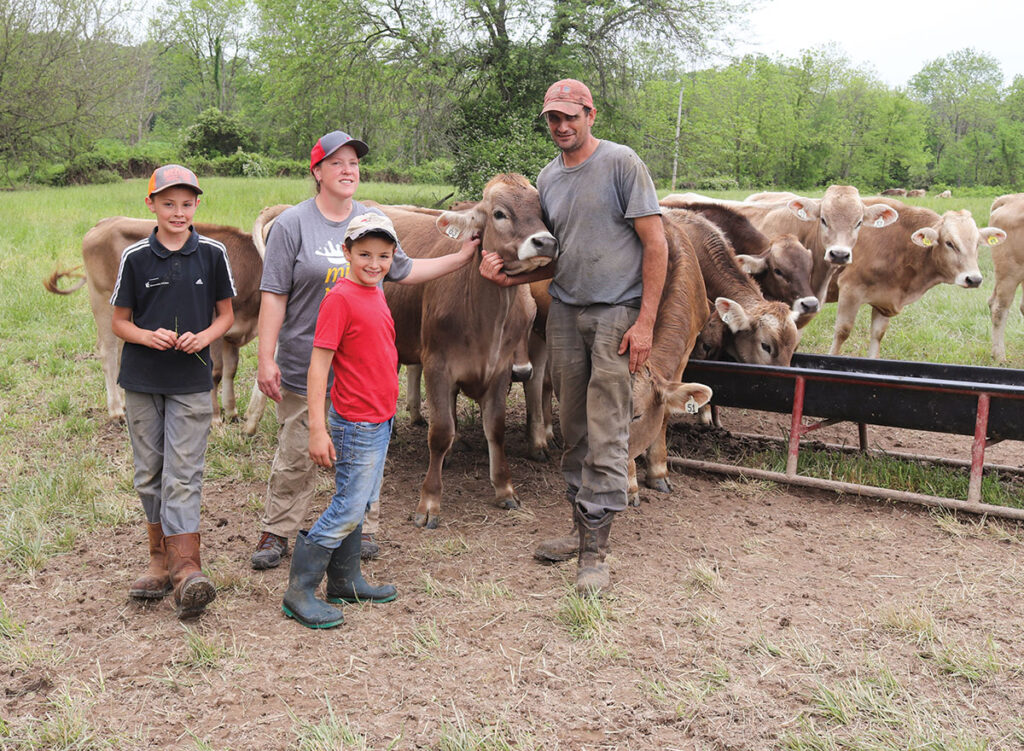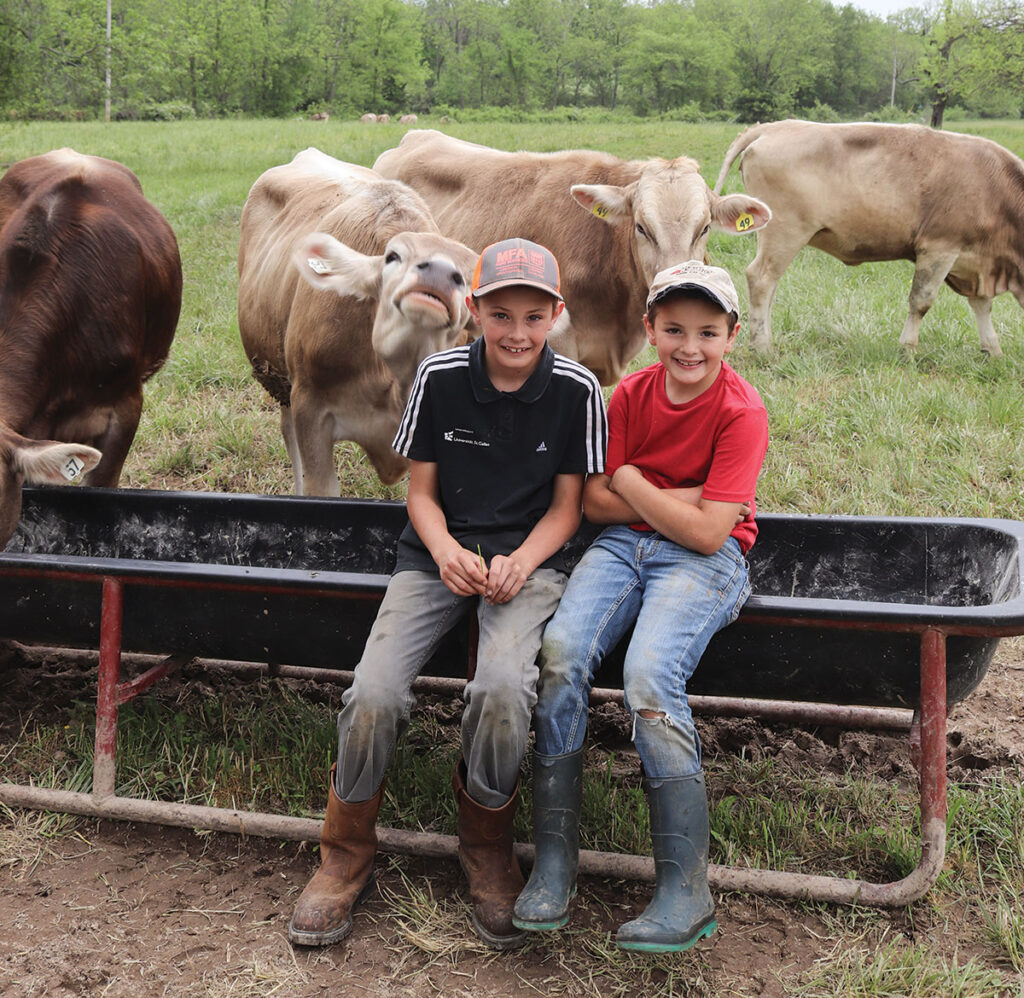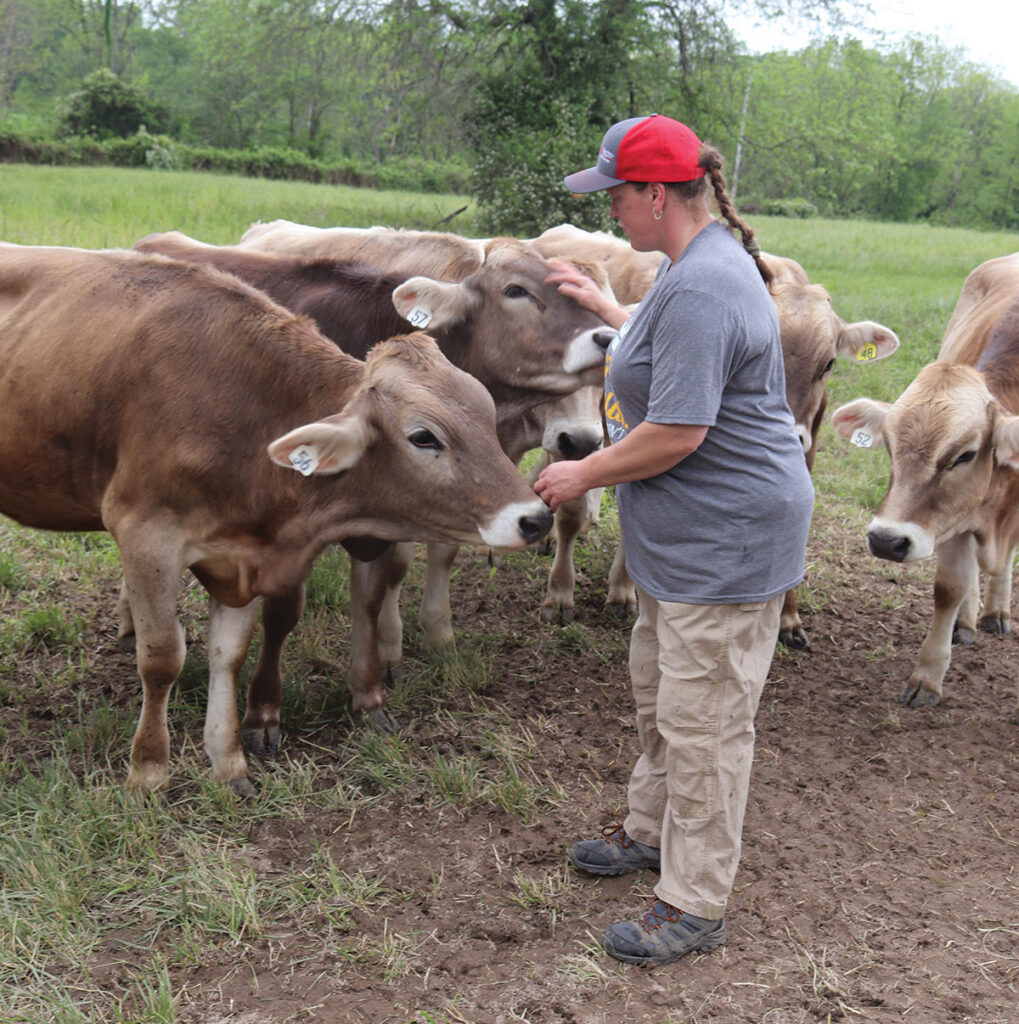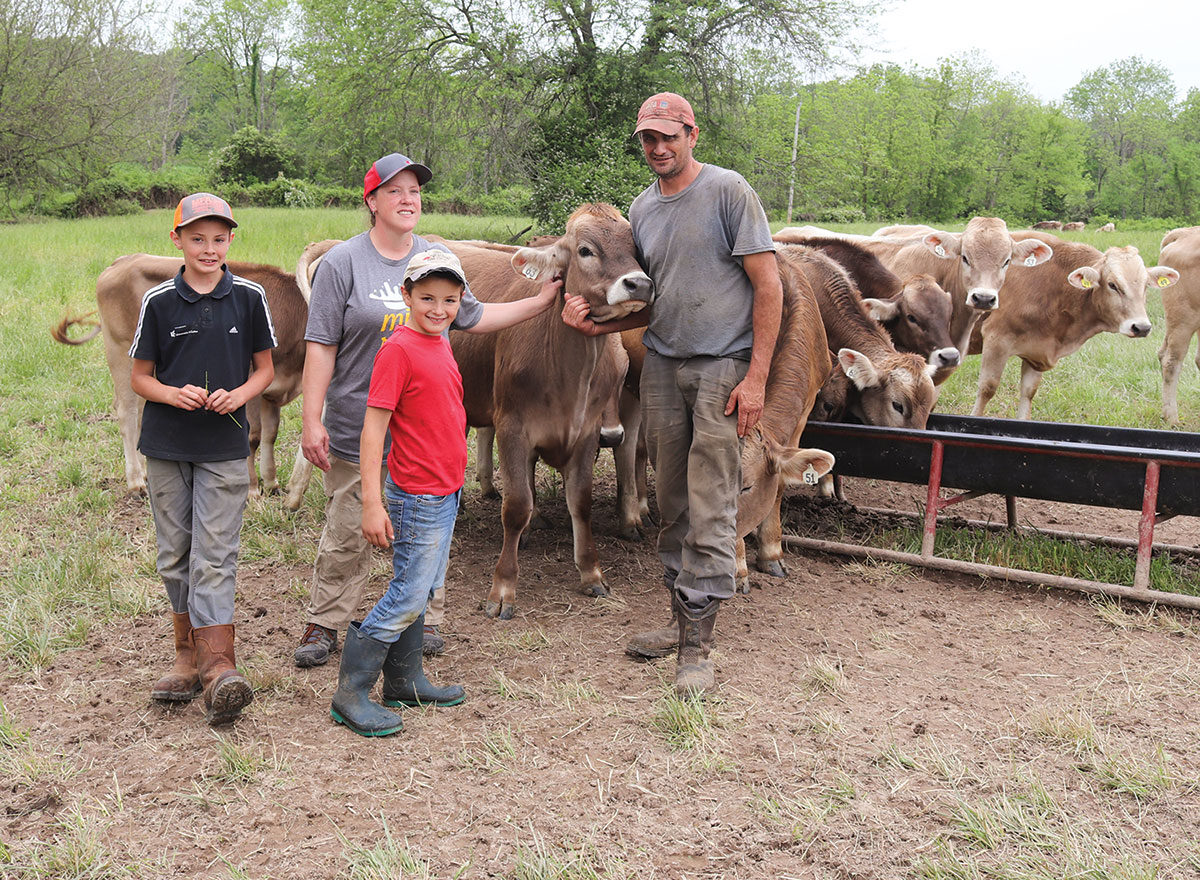
The Roth family sold their herd in 2017, but returned to the farm and dairy industry in 2020
GROVESPRING, MO. – Switzerland native Emanuel Roth came to the U.S. in 2000 with his uncle, Ernst, to start a dairy farm. They started Lorreda Dairy near Grovespring, Mo., with a mostly Brown Swiss herd.
“We started on this place in an old, old barn. You could see the daylight through the ceilings, and we spent about seven hours a day in the barn,” Emanuel recalled. “Then, the cow numbers outgrew the barn and the land. We bought a second farm in 2005, then in 2010, we built a new barn, a feeding floor, and kept increasing the cow numbers.”
In 2017, they decided it was time to stop.
“We just couldn’t do it anymore,” Emanuel said. “We were close to running 200 cows, and so we sold out in November 2017; we sold all of the cows and the second farm.”
Following the sale, Emanuel, his wife Lesley, and their young sons, Jacob and Josiah, moved to Switzerland. However, Ozarks drew the family back after a year.
“I was working there, and I couldn’t ever get happy,” Emanuel said. “It was too crowded, and there were too many people. I really didn’t know what to do with myself after we sold out. We rented the farm out for a couple of years, and then in 2020, we started milking again.”
The Roths now milk about 60 cows at their 230-acre Wright County farm, now called ELJJ Dairy.
“We can do it ourselves now, where we had to have full-time and part-time help before,” Emanuel said.
Registered Brown Swiss remain the foundation of ELJJ Dairy, and the Roths appreciate the gentle nature, the overall structure, and the high milk components the breed offers.
“They also take the heat a lot better than a Holstein,” Emanuel said. “We had Brown Swiss overseas, so it’s what I’ve known.”
The Brown Swiss breed, in his experience, also offered superior longevity.
“We’ve got several cows that are 10 years old, and I think the oldest is about 14,” Emanuel said. “They just last longer and have better feet and legs.”
To restart their operation, the family purchased a herd from Iowa. Emanuel said the cows adjusted well to the Ozarks, but there were some bumps in the road.
“They were kept in a tie-stall barn,” Emanuel explained. “I think they may have been let out in a paddock, but when they got here, it was the first time they ever saw pasture. They took off like they’ve always had it. The worst part was trying to get them into the parlor the first two days.”

With the new herd also came a few changes to the Roth farm. The double 12 herringbone parlor built in 2011 was changed to a double 6.
“Two people just couldn’t keep up with it,” Lesley, who grew up raising Longhorns, said of double 12.
“A lot of times, we both milk, but one person can do it by themselves now,” Emanuel said.
The couple also added a compost pack barn.
“You start with about a foot of sawdust, then you start tilling it twice a day,” Emanuel explained. “When it starts to get a little wet, you add more sawdust and till it in. Like the name says, it turns into compost.”
The compost is removed twice a year and used as fertilizer on the farm’s fields.
Cows roam the farm, with lactating cows grazing a mix of annual rye and orchardgrass. Heifers and dry cows are mostly on fescue pastures.
In the winter months, cows receive a mixture of wheat, ryegrass, sorghum-sudangrass, and whatever pasture mix is available through baleage. The Roths also purchase alfalfa.
“We used to grow corn silage,” Emanuel said. “This year, I have started to grow some, so we will have to see how it goes. We graze during the day, and then I feed a TMR overnight. It’s challenging; sometimes, you don’t know what they get outside and what you should feed inside. We mainly offer feed because I like the production, and the components are a little better than what you have with straight grazing. I can’t stand to milk a cow that just milks 40 pounds. We’re at about 60 pounds daily; we were almost 65 pounds this spring. The rolling herd average right now is 19,200.”
Cow comfort and care are essential to the Roths because happy, healthy cows produce high-quality milk.
“Seems like a lot of people don’t really care about cow comfort, but I feel like production has more to do with comfort than the feed sometimes,” Emanuel said. “You talk to other producers in the winter, and it’s down to zero, they say, ‘Those cows sure do eat a lot.’ I can’t tell that much of a difference because they are inside the barn. These are bigger cows, so if you want them to produce and breed back, you have to feed them. You have to take good care of them.”
The Roths and ELJJ Dairy were honored in both 2021 and 2022 with the lowest somatic cell count by Central Equity Milk Cooperative, the cooperative that purchases the farm’s milk.
“I believe it was below 200,000 every month,” Emanuel said. “I believe that’s another plus of the breed. Brown Swiss are, in general, have the lowest somatic cell count in the dairy world.”

Retained dairy heifers are bred at about 14 months of age. The first group of retained heifers from their new herd are coming into the parlor this year.
“We like the genetics we have, so we don’t cull as hard as we should sometimes,” Emanuel said. “What we breed for is that production component and good feet. Eventually, we are going to have to cull a little harder. Until now, we had nothing to add, but now we have a little more choices. As long as an older cow is producing, she makes you more money than a heifer, so we don’t really have a reason to sell an older cow that is still producing.”
Lesley said their herd is very calm, and they want to keep those genetics. Any problematic cow in the milking parlor after the first lactation is culled.
“The kids can walk to them, and they aren’t kicky when we’re milking,” she said. “We don’t want to get hurt, and we don’t want the kids to get hurt.”
The mature cow herd and some heifers are bred through AI. Emanuel said they recently ran a bull that turned out to be unproductive, so they have introduced an Angus bull to breed all open females.
Most Brown Swiss bull calves and all calves produced from the Angus/Brown Swiss cross are sold as bottle calves.
For now, the Roths hope to keep their milking herd at about 60 but may expand.
“Once they figure out what they want to do, we will see,” Emanuel said, referring to 11-year-old Jacob and 7-year-old Josiah.
The dairy industry may be a struggle, but for the Roth family, life is always better on the farm.
“I love dairying and that the cows have all of their own personalities,” Lesley said. “I like that our cows are laid back, and you can walk among them; they’re just big pets.”
“Out here, besides the milk inspector, no one tells you what to do; you are your own boss,” Emanuel added. “Plus, I like cows.”







